Faculty Members Across Several Disciplines Receive Grants, Awards
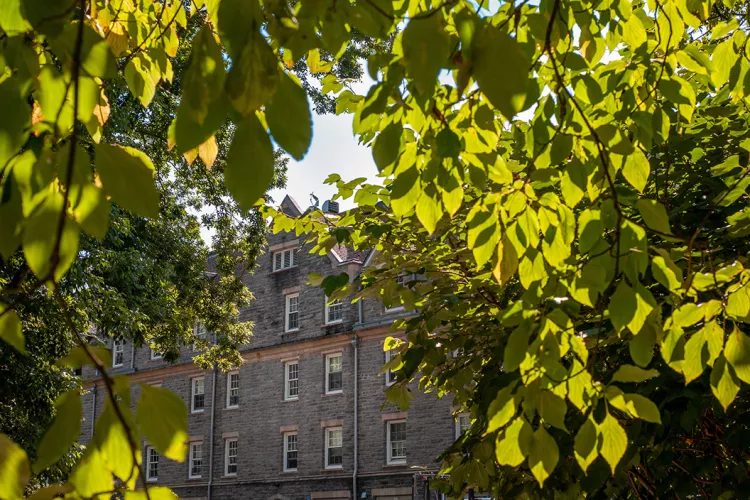
Over the spring and summer of 2022, Swarthmore faculty members across several disciplines — including marine biology, music, computer science, astronomy, and economics — were recognized with grants and awards from a distinguished group of organizations.
With their commitment to collaborating with students and in research, Swarthmore’s faculty best reflects the College’s mission of offering a robust liberal arts curriculum connecting the humanities, natural sciences and engineering, social sciences, and interdisciplinary programs.
Elaine Allard ’01, Associate Professor of Educational Studies, and Barbara Thelamour, Assistant Professor of Psychology
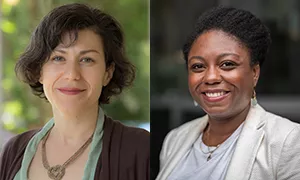
Elaine Allard (left) and Barbara Thelamour
Many immigrant adolescents encounter xenophobia, language-based discrimination, and racism in schools, and these experiences undermine their identity development, cultural connection, and academic outcomes. Yet we know that positive intercultural experiences contribute to adolescent well-being and academic achievement, and that teachers and schools can create conditions to support them. Aided by a grant from the Spencer Foundation, Allard and Thelamour will explore how cross-cultural dynamics unfold in one Philadelphia high school where students regularly interact across ethnolinguistic differences and how these interactions impact students’ academic achievement, language learning, and well-being. The study will offer insights into how secondary schools can promote positive intercultural relations in their school communities and thereby support immigrant and emergent bilingual students' success.
“We are thrilled to continue this long-standing, engaged research project with a North Philadelphia high school,” say Allard and Thelamour. “This project's focus on cross-cultural dynamics is an expansion on previous small-scale qualitative research in ESL classrooms at this school, in which we observed complex cross-linguistic interactions among students. “Spencer funding will allow us to add micro-ethnographic and large-scale survey components to the study, which will help us to better understand how cross-cultural dynamics among students emerge in classrooms, and to explore their impacts. Our student research assistants will be exposed to mixed-method and community-based research approaches to understand the experiences of immigrant students and their teachers. Through this work, we hope to continue to support curricular and policy efforts and teacher professional development at this school and beyond.”
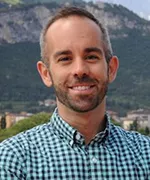
James Blasina, Assistant Professor of Music
Blasina, with a summer stipend from the National Endowment for the Humanities (NEH), has been examining how liturgical chant contributed to the devotion to St. Catherine of Alexandria. Although there is no evidence to support that Catherine existed, artists of every discipline have created works in her honor. Blasina’s research is toward his book, which will consider how representations of St. Catherine in musical sources from 1050 to 1400 saw her as both an emblem of power and voice of marginalized dissents.
“St. Catherine bucked so many trends in female sanctity in the high Middle Ages, and nonetheless, was immensely popular throughout Europe and the Mediterranean,” explains Blasina. “Music and liturgical evidence provide critical information on the earliest years of her cult that helps to explain her later superstar status.”
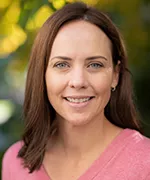
Erin Bronchetti, Associate Professor of Economics
One in four older workers develop a disability after the age of 55, with one-quarter of those limitations originating at work. This can significantly impact retirement timing and preparedness.
The National Bureau of Economic Research (NBER), supported by the Alfred P. Sloan Foundation, has awarded Bronchetti and her colleague, Melissa P. McInerney, professor of economics at Tufts University, a grant to provide new evidence on the effects of experiencing a workplace injury on retirement preparedness and timing, and to document whether the long-run impacts of work-related injuries differ from those of other work-limiting health impairments.
"Melissa and I have a history of working together on the topic of workplace injuries and occupational safety,” says Bronchetti. “Data limitations have made it very difficult to examine how work-related injuries and illnesses affect older workers, as they near retirement age and make decisions about retiring. We are grateful for the support from NBER and Sloan and are excited to get working with new data on workplace injuries to help close this gap in the literature."
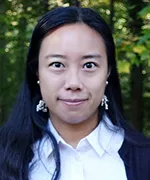
Karen Chan, Assistant Professor of Marine Biology
With a grant from the National Science Foundation (NSF) and another from the Company of Biologists, Karen Chan and Jeanette Wheeler, assistant professor of biology at the Memorial University of Newfoundland, will organize a symposium and workshop for the 2023 annual meeting of the Society for Integrative and Comparative Biology (SICB). Entitled "Large-scale phenomena arising from small-scale biophysical processes" this symposium focuses on how single cells, despite their small size, can organize and behave in ways that have unexpected and wide-reaching consequences.
The symposium will feature biologists and engineers presenting and discussing the latest findings and techniques, marrying state-of-the-art field, laboratory, and mathematical approaches. The complementary workshop will discuss strategies for engaging in successful cross-disciplinary research to promote the use of mathematics, physics, and engineering tools to address biological problems. Results from the meeting and workshop will be published in the Society’s journal, Integrative and Comparative Biology.
"I look forward to bringing scientists from different disciplines together to tackle key biological questions across the spatial and temporal scales,” says Chan. “It is high time for us to develop a single marketplace for knowledge and remove discipline boundaries and encourage young scientists to take part in this movement."
Karen Chan, Assistant Professor of Marine Biology, and Carr Everbach, Isaiah V. Williamson Professor of Civil and Mechanical Engineering & Environmental Studies
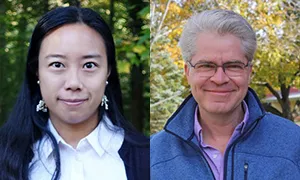
Karen Chan (left) and Carr Everbach
This collaboration between Swarthmore and the University of California, Berkeley, sponsored by the National Science Foundation (NSF), will focus on zooplankton. This diverse collection of microscopic animals is a vital link in marine food webs.
Many zooplankton have elongated body extensions or spines, but the function of these spines is not well understood. This project looks to explain the general principles of the hydrodynamic consequences of spines at the size and speed range of zooplankton. Using the nauplii of barnacles as focal organisms, this work will also improve understanding of the functioning of this critical life stage of a commercially and economically important group. The team will consist of undergraduates from various majors who will gain authentic cross-disciplinary research experience.
“We are excited about this collaboration between biologists and engineers to understand how form informs functions,” say Chan and Everbach. “Our students are towing dynamically scaled static models to study fluid flow around them and codifying the swimming motion of these tiny organisms in order to make a robot that can swim similarly. This work will advance our knowledge of the evolution of zooplankton and provide new insights into biomimicry. ”
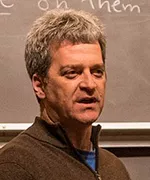
David Cohen, Professor of Astronomy
Massive stars produce very hot gas and associated X-ray emission in their dense, radiatively driven winds. Time-variable X-ray emission has been reported in an increasing number of massive stars, leading to the hypothesis that large-scale wind structures, modulated by the rotation of the star, produce the observed X-ray variability.
As part of the NASA Chandra X-Ray Observatory's theory program, co-investigators David Cohen and Alexandre David-Uraz, postdoctoral associate at Howard University, will conduct the first detailed, non-isothermal 2D and 3D hydrodynamic simulations to assess the role of so-called co-rotating interaction regions in the production and modulation of X-rays. These new models will help interpret data from Chandra and other X-ray telescopes, shedding light on the puzzling physics of the origin of the large-scale wind structures.
“Massive star winds are one of the only places in the universe where light is intense enough to push matter around,” explains Cohen. “My students and I have developed several techniques for studying the properties of these winds based on observations made with X-ray telescopes, but this new project is a theoretical investigation that might help explain some of the unexpected phenomena that we've been studying. I'm excited to learn some new modeling techniques from my Howard University collaborators and to work with Swarthmore students on this project.”
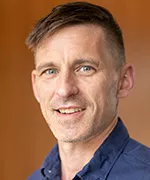
Christopher Graves, Assistant Professor of Synthetic Inorganic Chemistry & Environmental Studies
The American Chemical Society (ACS) has recognized the work being done in Christopher Grave’s lab to develop a more sustainable chemical process through the use of aluminum. The development of aluminum complexes that act as catalysts for high-impact chemical reactions is a significant challenge to green and sustainable chemistry.
This project will address needs in polymer science. Specifically, the project team will seek to develop a new set of aluminum complexes supporting both a tris-pyrazolylborate (Tp) ligand, as a highly modifiable auxiliary, and an ⍺-diimine ligand, as a source of redox activity.

Amy Kapit, Visiting Assistant Professor Peace & Conflict Studies
The goal of this project is to help the granting organization, the Norwegian Students’ and Academics’ International Assistance Fund (SAIH), to develop a methodology for tracking and analyzing the suppression of university student activism, including through acts that violate student activists' rights. The project will support SAIH's advocacy and campaigning to raise awareness of the role that students play as defenders of human rights and to increase protections for them. Kapit will work with student research assistants to carry out data collection to develop an initial methodology, code book, and preliminary set of indicators that SAIH can use to produce an annual Student Rights Watch Report.
"This is a really important and really neglected area of work," says Kapit. "Many people who become human rights defenders become involved in activism as students. If student activists aren't protected and the space for student activism isn't allowed to flourish, that's likely to also suppress future activism. What I've found so far through the research is that there's a big gap in attention to student activists. Groups that support protections for human rights defenders don't specifically focus on students. And groups that focus on issues like academic freedom tend to be more focused on the work of academics, rather than on students. I'm also really excited to be working with students here at Swarthmore on this project. This project is about students, and I feel strongly that it needs to be shaped by student perspectives."
Kevin Webb, Associate Professor Computer Science, and Tia Newhall, Centennial Professor of Computer Science
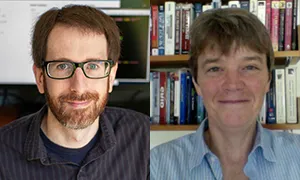
Kevin Webb (left) and Tia Newhall
Webb and Newhall with colleague Suzanne Matthews, associate professor of computer science at the the United States Military Academy, West Point, created a free online textbook. The resource, which provides an accessible introduction for students to computer systems, computer organization, and parallel and distributed computing, has already been adopted by over 30 colleges and universities. The National Science Foundation (NSF) has recognized the importance of this work with a grant to build on the text by adding enhancements like interactive learning exercises, animated video content, and support for broader dissemination of the materials through engagement with the computer science community.
“We're excited for this opportunity to develop interactive content to augment our free online textbook,” say Newhall and Webb. “As computational thinking and programming increasingly become desired skills, the computer science (CS) community needs freely available computing materials to truly make CS accessible to everyone. The unique online nature of our textbook allows us to offer forms of interactive content that foster learning in new ways. This grant will provide research opportunities for Swarthmore students in CS education, user interface design, and tool development. As part of the grant, we'll be working with a diverse group of experts from the CS education community to help create free resources to make CS more accessible for a broad audience.”



